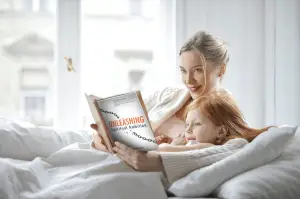Finding Freedom in Less: A Reflection on The Year of Less by Cait Flanders
In a world that constantly clamors for more—more things, more experiences, more spend—Cait Flanders’ The Year of Less beckoned me like a soothing oasis. The promise of discovering life’s true worth beyond consumerism resonated deeply with me, especially as I navigated my own cluttered mental landscape filled with “want.” With Cait’s personal journey guiding the way, I knew I was in for something transformative.
Cait’s narrative begins with a familiar struggle: the relentless cycle of earning, spending, and accumulating. Her own battle with nearly $30,000 in consumer debt echoed my past—one spent in the pursuit of fleeting happiness through material possessions. What struck me was her realization that acquiring more wasn’t filling the void; instead, it served as an emotional crutch. This moment of clarity prompted her to embark on a challenging year of not shopping—a bold move that formed the spine of the book.
Through twelve months of introspection, Cait decluttered her home and life, shedding a staggering 70% of her belongings. As I read about her journey, I couldn’t help but reflect on my drawers filled with clothes I rarely wore and gadgets that had long lost their novelty. Cait’s thoughts on breaking up with consumer habits were both relatable and eye-opening, reminding us of the profound emotional ties we have to our possessions. Her candidness—including monthly updates on her journey—created an intimate reading experience. Each chapter felt like catching up with a dear friend rather than reading a self-help manual.
However, what truly elevated Cait’s narrative was her exploration of deeper themes, like emotional growth and self-awareness. She draws parallels between shopping and addictive behaviors, likening her self-reflection to sobriety. One reader mentioned, “Sometimes, retail therapy can be just as harmful as any other addiction,” encapsulating the essence of Cait’s struggle. This perspective shifted my understanding of my own habits; it made me question what I sought to soothe during moments of stress and uncertainty.
While Cait’s writing is clear and engaging, some may find the pacing a bit repetitive—her lessons are often revisited to reinforce key points. Yet, I viewed this consistency as a reassuring reminder, a way of gently revisiting the heart of her message: that life is indeed richer when we choose intentionality over impulse.
I found myself enchanted with Cait’s growth, her insights glowing like the transformative glow of spring after a long winter. It’s a call to action for anyone feeling overwhelmed by their possessions or caught in the clutches of consumer culture.
The Year of Less is ideal for readers at any stage in their journey toward minimalism or intentional living. Whether you’re a seasoned minimalist or just beginning to acknowledge the emotional ties to your things, Cait’s story will undoubtedly leave you inspired to evaluate what truly matters.
As I closed the book, I felt a sense of clarity. This read wasn’t just an exploration of less; it was an invitation to immerse myself in the richness of living authentically. If you’re seeking to redefine your relationship with possessions—this book might just be the nudge to step into your own year of less.






